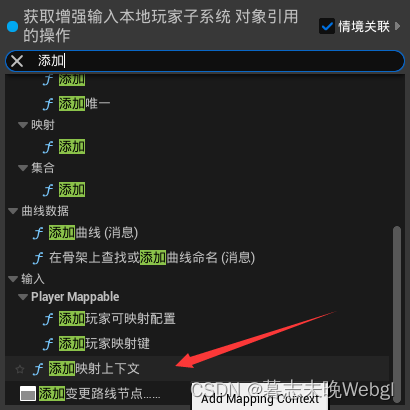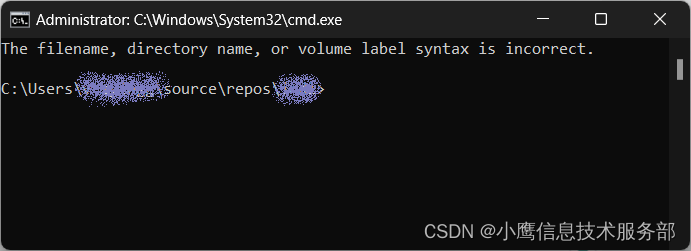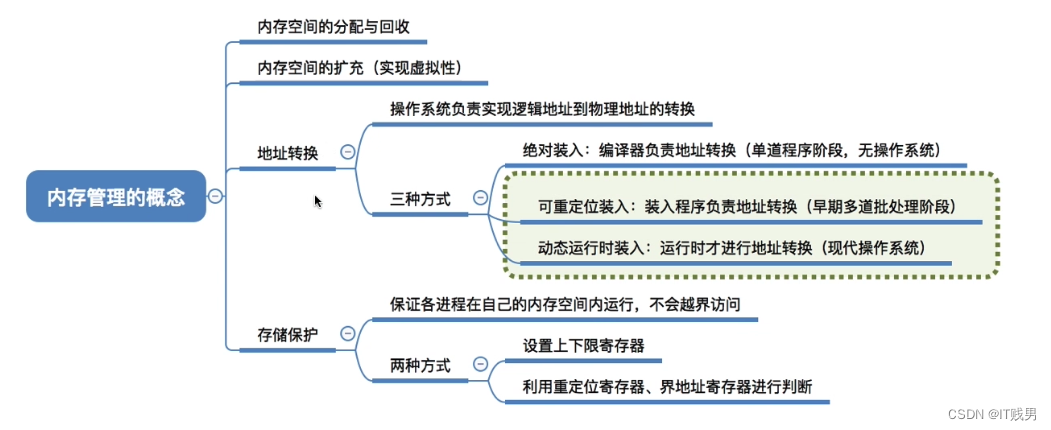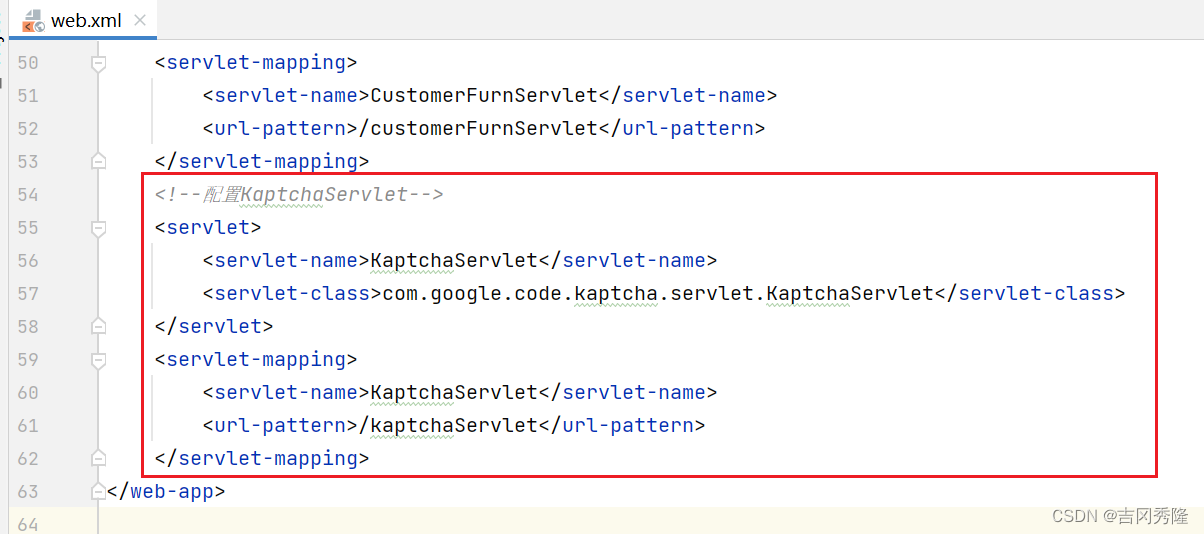栈:先进后出
队列:先进先出
JVM的栈就是平常所说的一块内存。
此处所说的栈是数据结构
1. 栈(Stack)
1.1 概念
栈:一种特殊的线性表,其只允许在固定的一端进行插入和删除元素操作。进行数据插入和删除操作的一端称为栈 顶,另一端称为栈底。栈中的数据元素遵守后进先出LIFO(Last In First Out)的原则。
压栈:栈的插入操作叫做进栈/压栈/入栈,入数据在栈顶。 出栈:栈的删除操作叫做出栈。出数据在栈顶。
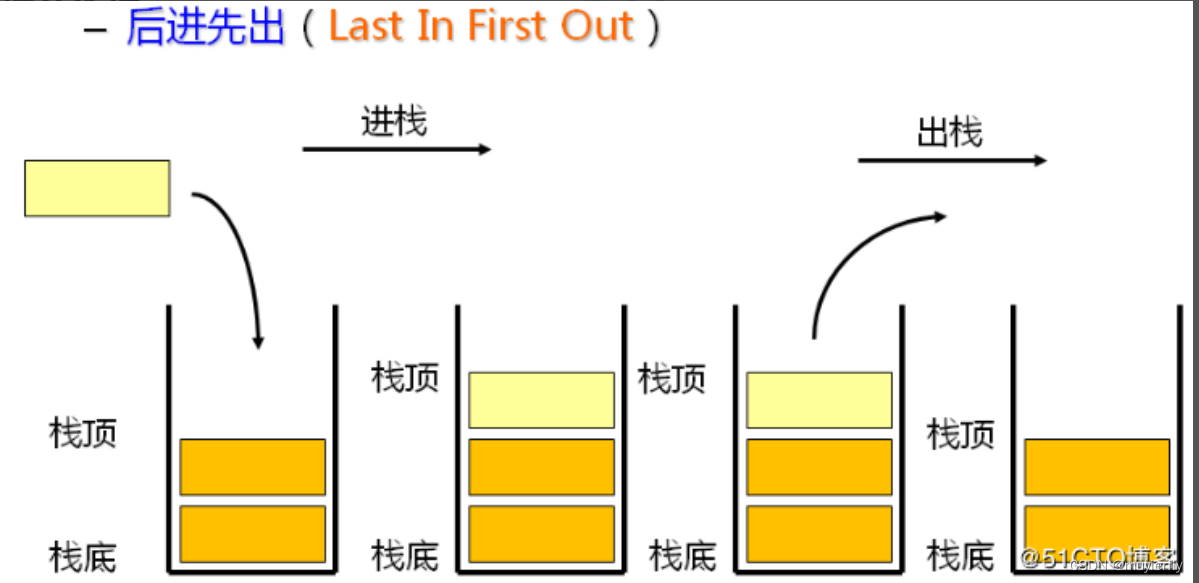
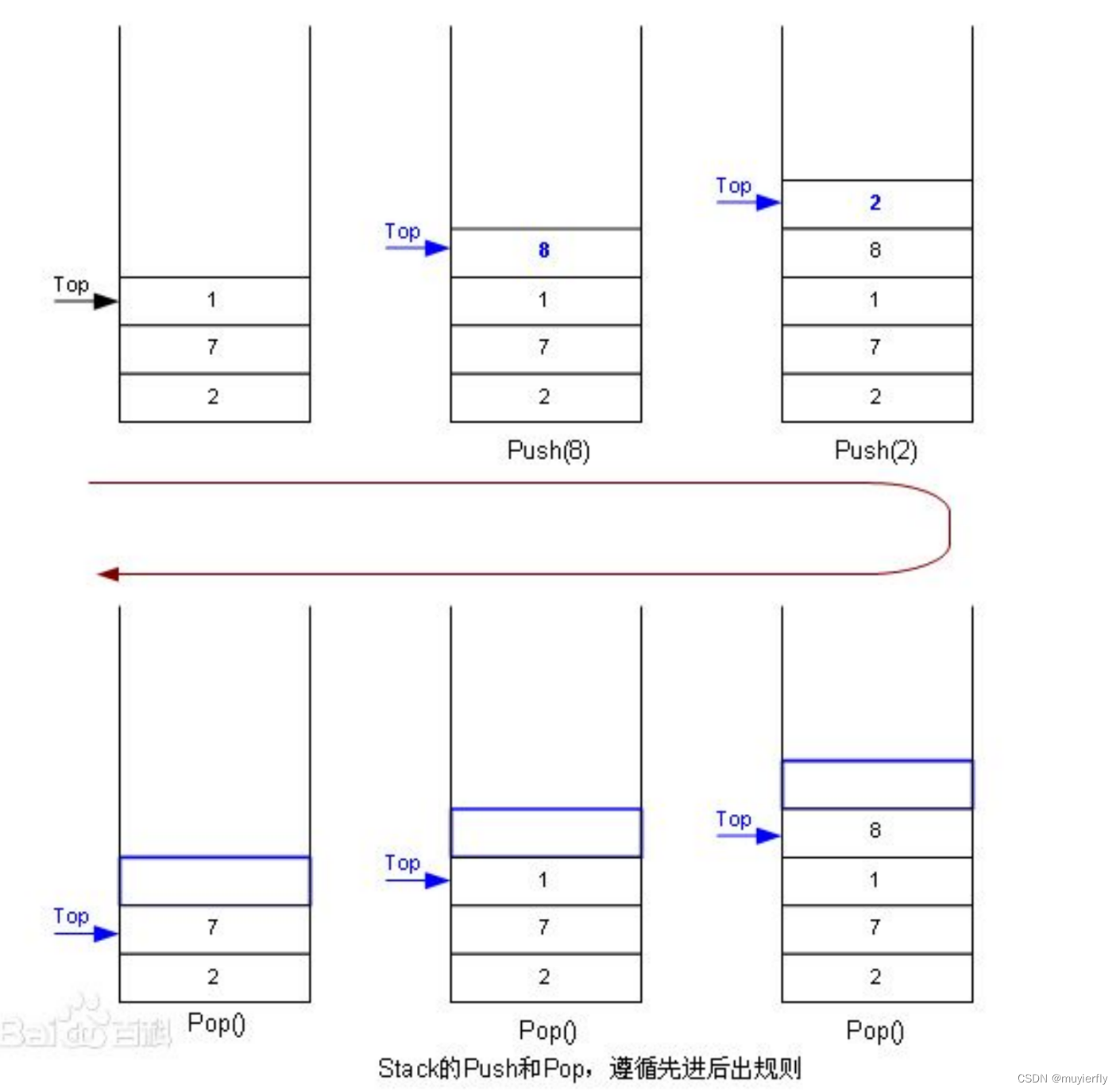
1.2 栈的使用
| 方法 | 功能 |
| Stack() | 构造一个空的栈 |
| E push(E e) | 将e入栈,并返回e |
| E pop() | 将栈顶元素出栈并返回 |
| E peek() | 获取栈顶元素(只是看看栈顶,并不删除) |
| int size() | 获取栈中有效元素个数 |
| boolean empty() | 检测栈是否为空 |
public static void main(String[] args) {
Stack<Integer> s = new Stack();
s.push(1);
s.push(2);
s.push(3);
s.push(4);
System.out.println(s.size()); // 获取栈中有效元素个数---> 4
System.out.println(s.peek()); // 获取栈顶元素---> 4
s.pop(); // 4出栈,栈中剩余1 2 3,栈顶元素为3
System.out.println(s.pop()); // 3出栈,栈中剩余1 2 栈顶元素为3
if(s.empty()){
System.out.println("栈空");
}else{
System.out.println(s.size());
}
}1.3 栈的模拟实现
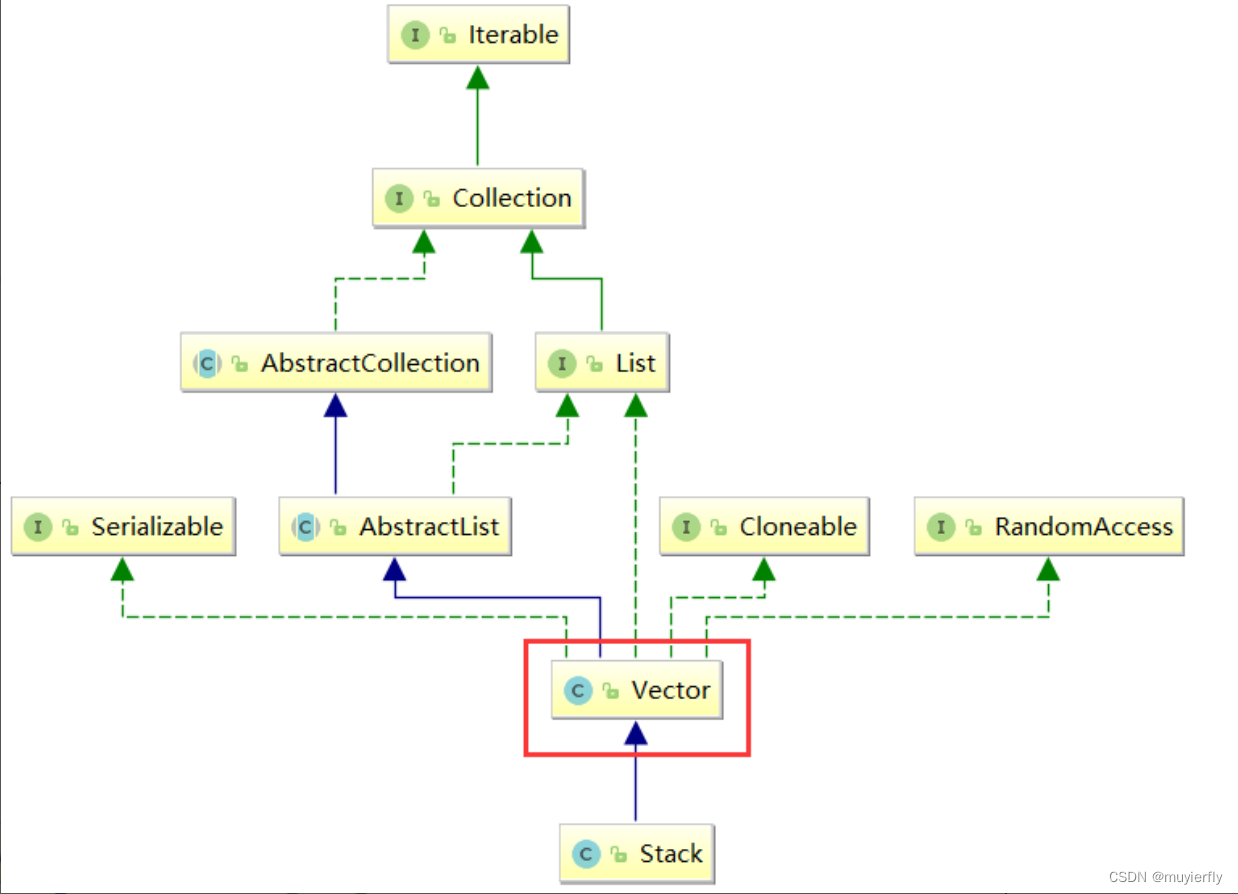
import StackEmptyException.StackEmptyException;
import java.util.Arrays;
public class MyStack {
private int[] elem;
private int usedSize;
public MyStack() {
this.elem = new int[5];
}
public void push(int val) {
if(isFull()) {
elem = Arrays.copyOf(elem,2*elem.length);
}
elem[usedSize] = val;
usedSize++;
}
public boolean isFull() {
return usedSize == elem.length;
}
public int pop() {
//1、判断栈不为空
if(empty()) {
//抛出异常!!
throw new StackEmptyException("栈为空!");
}
//2、开始删除
return elem[--usedSize];//只需要让usedsize--
}
public int peek() {
//1、判断栈不为空
if(empty()) {
//抛出异常!!
throw new StackEmptyException("栈为空!");
}
//2、开始删除
return elem[usedSize-1];
}
public boolean empty() {
return usedSize == 0;
}
}1.4 栈的应用场景
1. 将递归转化为循环 比如:逆序打印链表
// 递归方式
void printList(Node head){
if(null != head){
printList(head.next);
System.out.print(head.val + " ");
}
}
// 循环方式
void printList(Node head){
if(null==head){
return;
}
Stack<Node> s=new Stack<>();
// 将链表中的结点保存在栈中
Node cur=head;
while(null!=cur){
s.push(cur);
cur=cur.next;
}
// 将栈中的元素出栈
while(!s.empty()){
System.out.print(s.pop().val+" ");
}
}
public void show3(ListNode head) {
if(head == null) {
return;
}
if(head.next == null) {
System.out.println(head.val);
return;
}
show3(head.next);
System.out.println(head.val);
}
public void show4() {
Stack<ListNode> stack = new Stack<>();
ListNode cur = head;
while (cur != null) {
stack.push(cur);
cur = cur.next;
}
//依次出栈
while (!stack.empty()) {
ListNode tmp = stack.pop();
System.out.println(tmp.val);
}
}2.中缀表达式转后缀表达式
150. 逆波兰表达式求值 - 力扣(Leetcode)
(10条消息) 中缀表达式转换为后缀表达式_中缀表达式转后缀表达式_石锅拌饭的博客-CSDN博客
//先弹出右操作数---后缀表达式
class Solution {
public int evalRPN(String[] tokens) {
Stack<Integer> stack=new Stack<>();
for(String s:tokens){
if(!isOpera(s)){
//数字:放入栈当中
stack.push(Integer.parseInt(s));//将字符串转成整数
}
else{
//弹出栈顶的两个元素
int num2=stack.pop();
int num1=stack.pop();
switch(s){
case "+":
stack.push(num1+num2);
break;
case "-":
stack.push(num1-num2);
break;
case "*":
stack.push(num1*num2);
break;
case "/":
stack.push(num1/num2);
break;
}
}
}
return stack.pop();
}
public boolean isOpera(String s){
if(s.equals("+")||s.equals("-")||s.equals("*")||s.equals("/")){
return true;
}
return false;
}
}3.括号匹配(070243)
20. 有效的括号 - 力扣(Leetcode)
(1)闭合顺序不对([)]
(2)左括号多了(()
(3)右括号多了())
结论:
1.当括号是匹配的时候,最终i遍历完了字符串,并且栈为空
2.遇到不匹配的就直接结束
3.当i遍历完了字符串,但是栈当中仍然有括号,则必定是左括号多了(肯定不匹配)
4.当栈空了,但是字符串还没有遍历完,则必定不匹配
思考:如何判断匹配
class Solution {
public boolean isValid(String s) {
Stack<Character> stack=new Stack<>();
for(int i=0;i<s.length();i++){
char ch=s.charAt(i);
if(ch=='('||ch=='['||ch=='{'){
//左括号入栈,因为左括号一定是符号最开始的部分
stack.push(ch);
}
else{//是右括号的情况
if(stack.empty()){
return false;
}
else{
char tmp=stack.peek();
if((tmp=='('&&ch==')')||(tmp=='['&&ch==']')||(tmp=='{'&&ch=='}')){
//括号匹配成功
stack.pop();
}
else{
return false;
}
}
}
}
if(!stack.empty()){
return false;
}
return true;
}
}4.栈的压入、弹出序列_牛客题霸_牛客网 (nowcoder.com)
1)何时入栈---每次都入
2)什么时候出栈
栈不为空的时候并且栈顶元素和k下标的元素相同时可以出栈
import java.util.*;
public class Solution {
public boolean IsPopOrder(int [] pushA,int [] popA) {
Stack<Integer> stack = new Stack<>();
int j = 0;//变量popA这个数组
for (int i = 0; i < pushA.length; i++) {
stack.push(pushA[i]);
while (!stack.empty() && j < popA.length
&& stack.peek() == popA[j]) {
stack.pop();
j++;
}
}
return stack.empty();
}
}分析:栈当中的最小值是随时改变的,这个最小值拿的是当前栈中剩下元素的最小的值
随着弹出数据,最小值也是发生改变的,类似于更新的最小值倒着往回取。
1.当栈中第一次存放数据的时候,两个栈中都要存储数据
2.第二次判断大小,看是否要放到min stack中。即第二次开始,每次入栈都需要和最小栈的栈顶元素进行比较,小于的时候才能入栈
3.出栈的时候,每次出栈都要和栈顶元素进行比较,如果和栈顶元素一样,那么两个栈都得出。
155. 最小栈 - 力扣(Leetcode)
import java.util.Stack;
class MinStack {
private Stack<Integer> stack ;
private Stack<Integer> minStack ;
public MinStack() {
stack = new Stack<>();
minStack = new Stack<>();
}
public void push(int val) {
stack.push(val);
//第一次在最小栈当中存储元素
if(minStack.empty()) {
minStack.push(val);
}else {
if(val <= minStack.peek()) {
minStack.push(val);
}
}
}
public void pop() {
//栈为空 则不能进行弹出元素
if(stack.empty()) {
return;
}
int val = stack.pop();
if(val == minStack.peek()) {
minStack.pop();
}
}
//获取栈顶元素 和 最小栈没有关系
public int top() {
if(stack.empty()) {
return -1;
}
return stack.peek();
}
//获取元素 不是删除元素
public int getMin() {
return minStack.peek();
}
}
2. 队列(Queue)
//从队尾进,队头出
//可以用链表实现
//入栈和出栈操作都是O(1)
//双向链表不管从哪入栈出栈时间复杂度都是O(1)
//如果是单链表,可以考虑头插法进行入栈,出栈,此时时间复杂度为O(1)
//如果是双向链表,入队和出队都可以达到O(1)
//LinkedList也经常被当作栈来使用

2.2 队列的使用(队头、队尾--队尾进、队头出 )
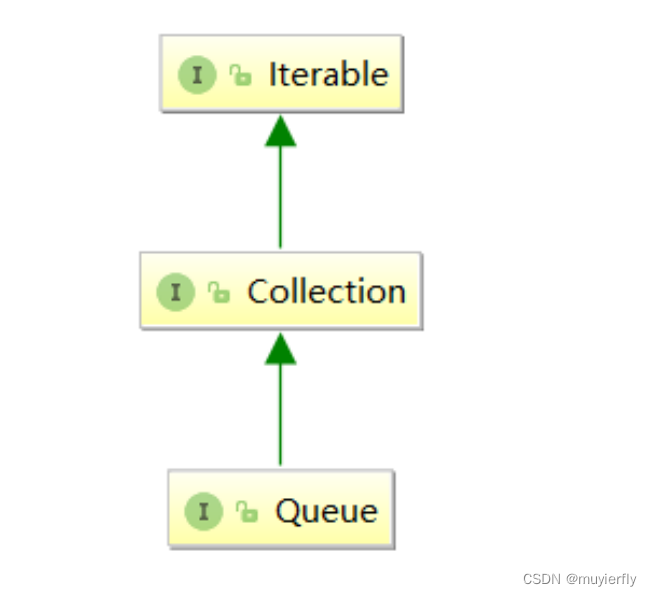
| 方法 | 功能 |
| boolean offer(E e) | 入队列 |
| E poll() | 出队列 |
| peek() | 获取队头元素 |
| int size() | 获取队列中有效元素个数 |
| boolean isEmpty() | 检测队列是否为空 |
public static void main(String[] args) {
Queue<Integer> q = new LinkedList<>();
q.offer(1);
q.offer(2);
q.offer(3);
q.offer(4);
q.offer(5); // 从队尾入队列
System.out.println(q.size());
System.out.println(q.peek()); // 获取队头元素
q.poll();
System.out.println(q.poll()); // 从队头出队列,并将删除的元素返回
if(q.isEmpty()){
System.out.println("队列空");
}else{
System.out.println(q.size());
}
}2.3 队列模拟实现
队列中既然可以存储元素,那底层肯定要有能够保存元素的空间,通过前面线性表的学习了解到常见的空间类型有 两种:顺序结构 和 链式结构。
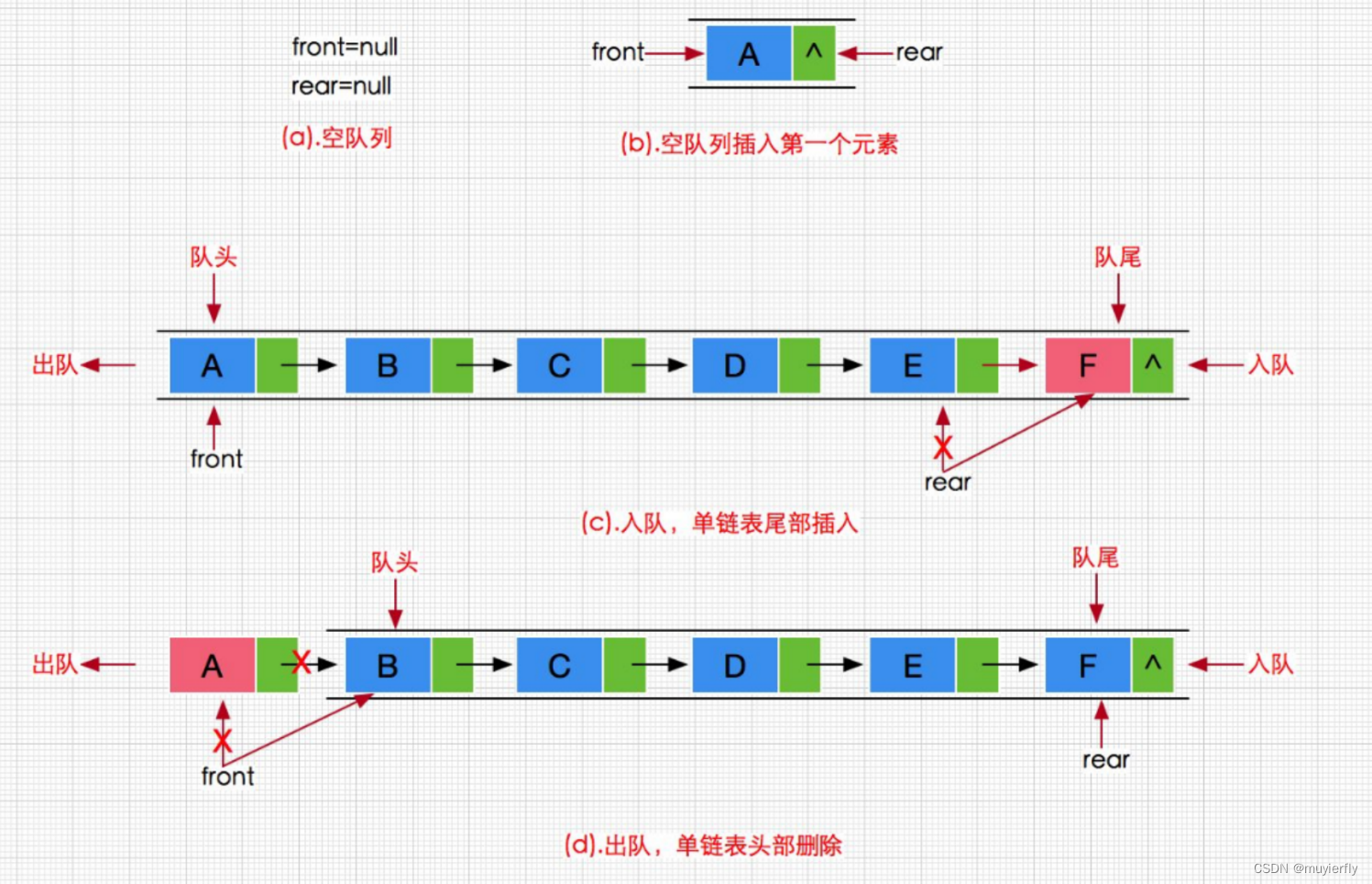
public class Queue {
// 双向链表节点
public static class ListNode{
ListNode next;
ListNode prev;
int value;
ListNode(int value){
this.value = value;
}
}
ListNode first; // 队头
ListNode last; // 队尾
int size = 0;
// 入队列---向双向链表位置插入新节点
public void offer(int e){
ListNode newNode = new ListNode(e);
if(first == null){
first = newNode;
// last = newNode;
}else{
last.next = newNode;
newNode.prev = last;
// last = newNode;
}
last = newNode;
size++;
}
// 出队列---将双向链表第一个节点删除掉
public int poll(){
// 1. 队列为空
// 2. 队列中只有一个元素----链表中只有一个节点---直接删除
// 3. 队列中有多个元素---链表中有多个节点----将第一个节点删除
int value = 0;
if(first == null){
return null;
}else if(first == last){
last = null;
first = null;
}else{
value = first.value;
first = first.next;
first.prev.next = null;
first.prev = null;
}
--size;
return value;
}
// 获取队头元素---获取链表中第一个节点的值域
public int peek(){
if(first == null){
return null;
}
return first.value;
}
public int size() {
return size;
}
public boolean isEmpty(){
return first == null;
}
}public class MyQueue {
static class ListNode {
public int val;
public ListNode next;
public ListNode(int val) {
this.val = val;
}
}
public ListNode head;
public ListNode last;
private int usedSize;
public void offer(int val) {
ListNode node = new ListNode(val);
if(head == null) {
head = node;
last = node;
}else {
last.next = node;
last = last.next;
}
usedSize++;
}
public int getUsedSize() {
return usedSize;
}
public int poll() {
if(head == null) {
return -1;
}
int val = -1;
if(head.next == null) {
val = head.val;
head = null;
last = null;
return val;
}
val = head.val;
head = head.next;
usedSize--;
return val;
}
public int peek() {
if(head == null) {
return -1;
}
return head.val;
}
}2.4 循环队列
实际中我们有时还会使用一种队列叫循环队列。如操作系统课程讲解生产者消费者模型时可以就会使用循环队列。 环形队列通常使用数组实现。

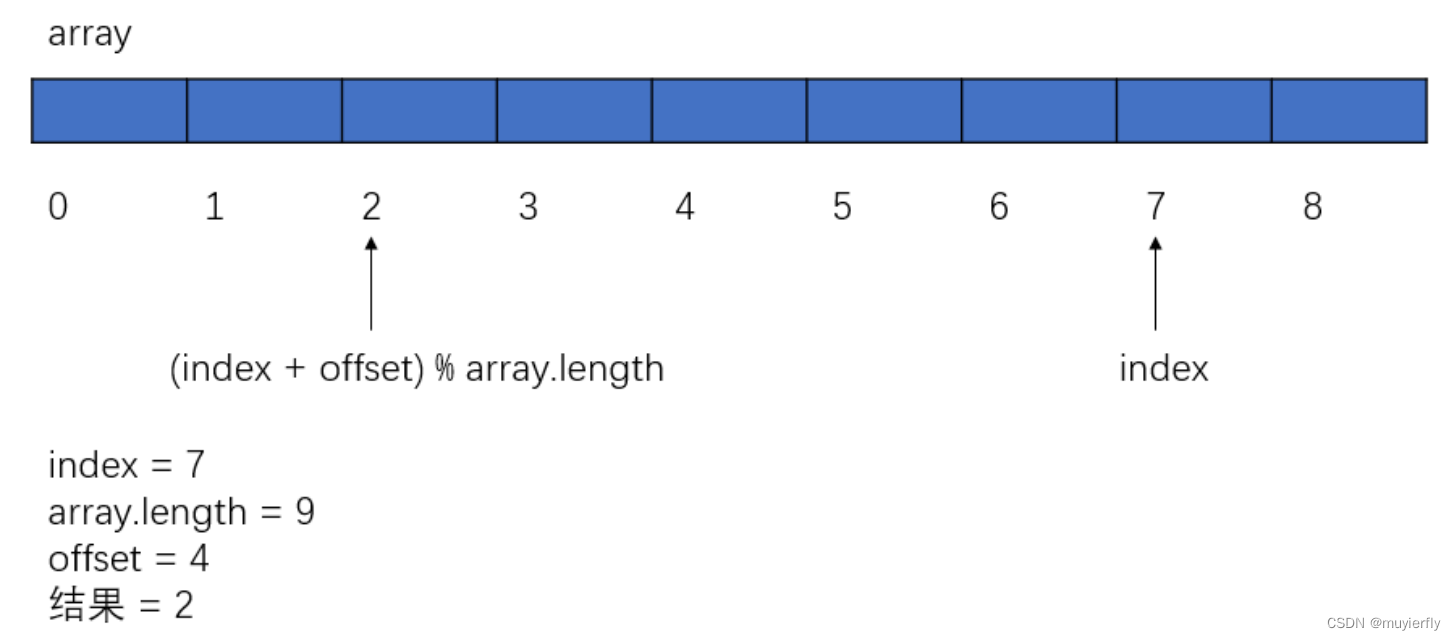
2. 下标最前再往前(offffset 小于 array.length): index = (index + array.length - offffset) % array.length
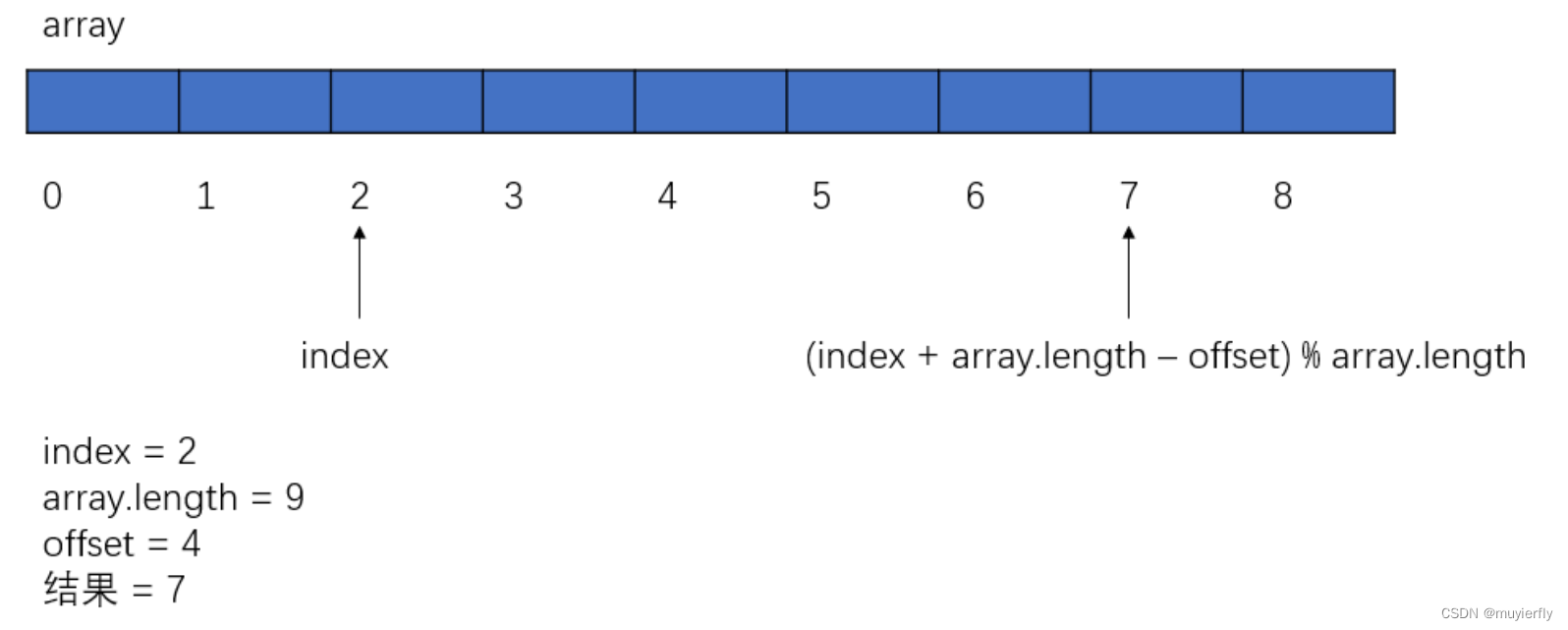
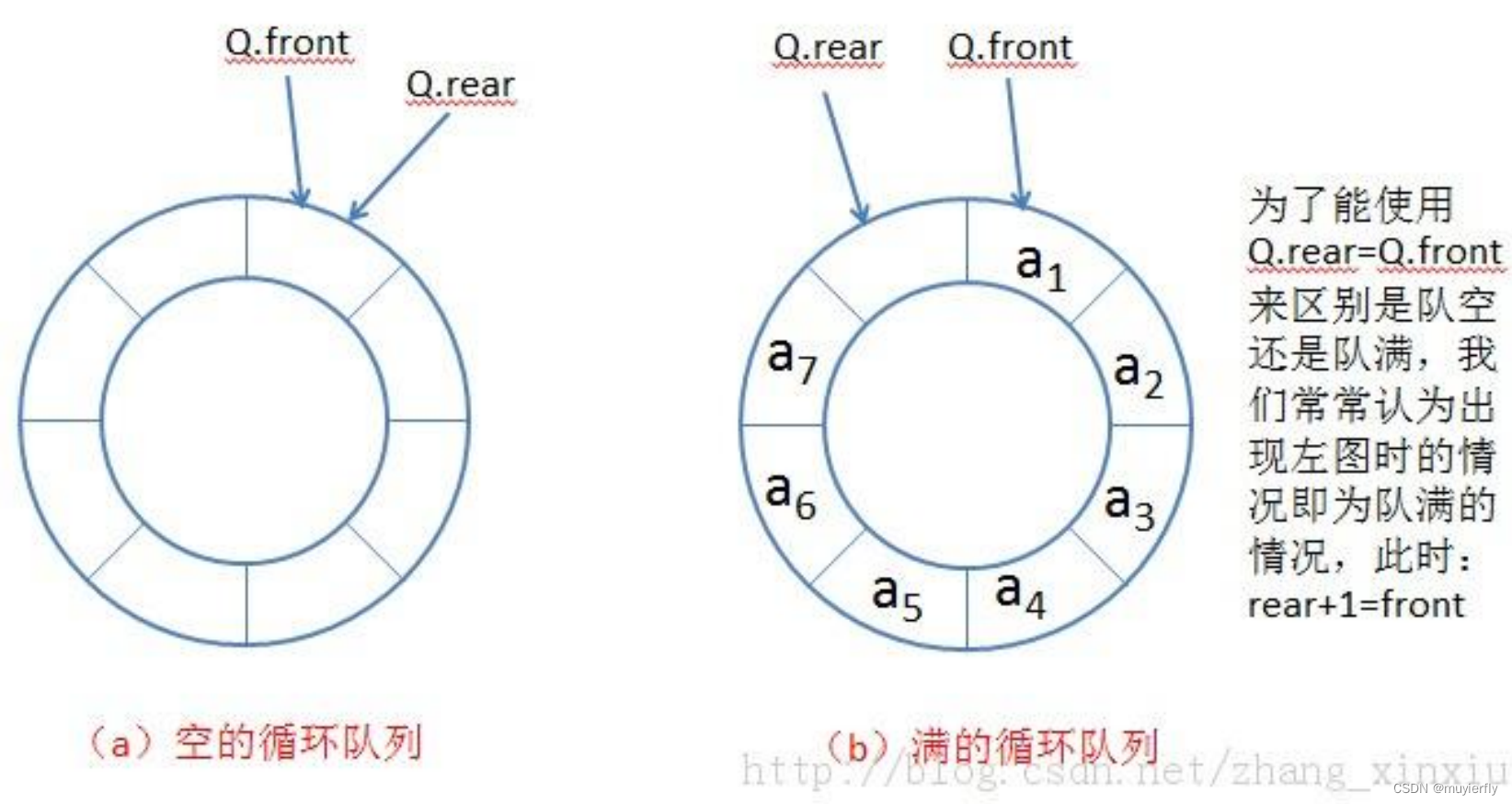
622. 设计循环队列 - 力扣(Leetcode)
class MyCircularQueue {
private int[] elem;
private int front;//队头下标
private int rear;//队尾下标
public MyCircularQueue(int k) {
this.elem = new int[k+1];
}
//入队
public boolean enQueue(int value) {
if(isFull()) {
return false;
}
elem[rear] = value;
rear = (rear+1) % elem.length;
return true;
}
//出队
public boolean deQueue() {
if(isEmpty()) {
return false;
}
front = (front+1) % elem.length;
return true;
}
//得到队头元素
public int Front() {
if(isEmpty()) {
return -1;
}
return elem[front];
}
//得到队尾元素
public int Rear() {
if(isEmpty()) {
return -1;
}
int index = (rear == 0) ? elem.length-1 : rear-1;
return elem[index];
}
public boolean isEmpty() {
return rear == front;
}
public boolean isFull() {
return (rear+1) % elem.length == front;
}
public static void main(String[] args) {
MyCircularQueue myCircularQueue = new MyCircularQueue(3);
System.out.println(myCircularQueue.enQueue(1));
System.out.println(myCircularQueue.enQueue(2));
System.out.println(myCircularQueue.enQueue(3));
System.out.println(myCircularQueue.enQueue(4));
System.out.println(myCircularQueue.Rear());// 2
System.out.println(myCircularQueue.isFull());
System.out.println(myCircularQueue.deQueue());
System.out.println(myCircularQueue.enQueue(4));
System.out.println(myCircularQueue.Rear());
}
}3. 双端队列 (Deque)

Deque是一个接口,使用时必须创建LinkedList的对象。
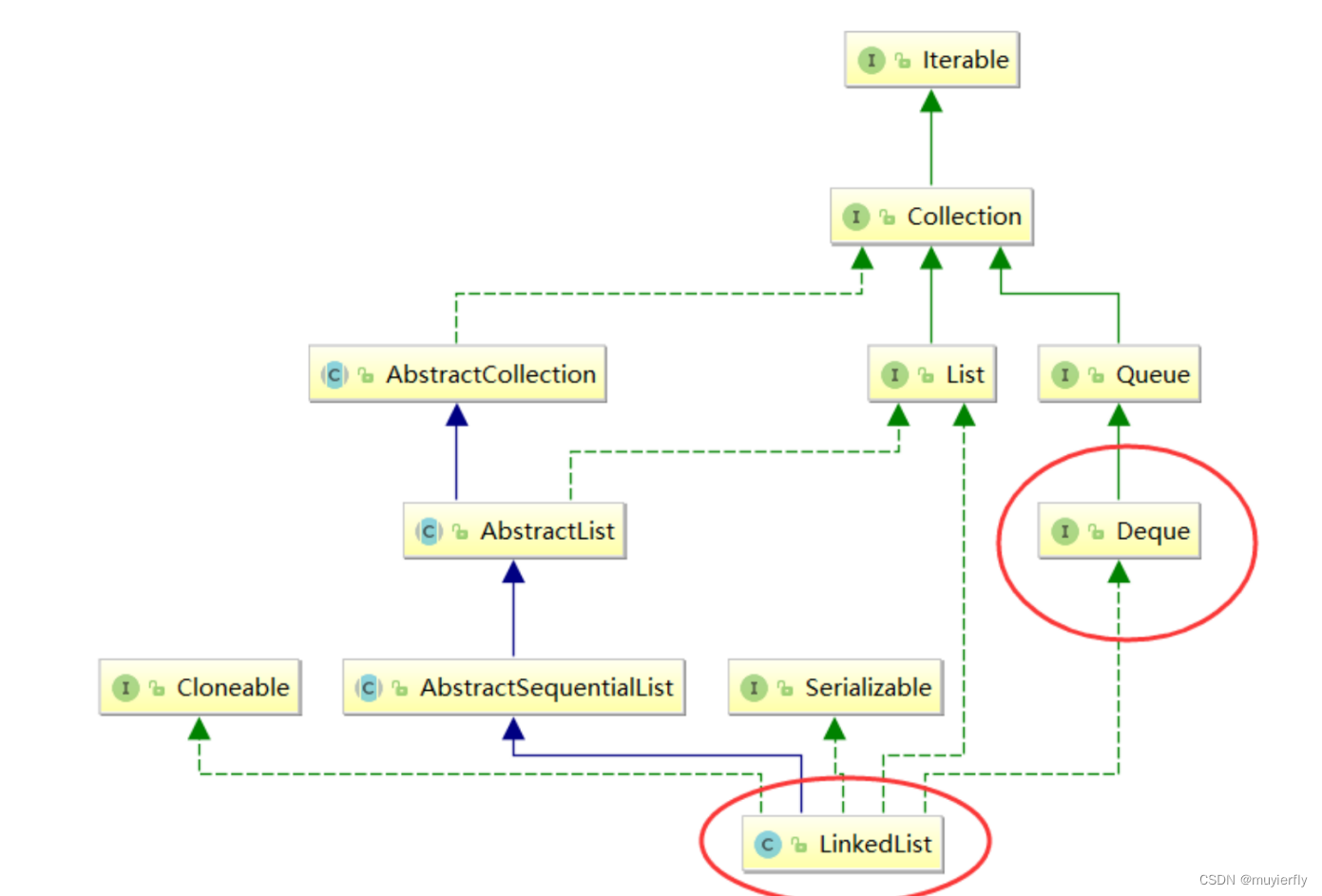
Deque<Integer> stack = new ArrayDeque<>();// 双端队列的线性实现Deque<Integer> queue = new LinkedList<>();// 双端队列的链式实现
1)push元素的时候应当放在那里?哪个队列不为空就放在哪里
2)出栈的时候,出不为空的队列size-1元素,剩余元素是要出栈的元素
import java.util.LinkedList;
import java.util.Queue;
class MyStack {
private Queue<Integer> qu1;
private Queue<Integer> qu2;
public MyStack() {
qu1 = new LinkedList<>();
qu2 = new LinkedList<>();
}
public void push(int x) {
//放到不为空的队列
if(!qu1.isEmpty()) {
qu1.offer(x);
}else if(!qu2.isEmpty()) {
qu2.offer(x);
}else {
//如果都是空的 放到第一个
qu1.offer(x);
}
}
public int pop() {
//两个队列都是空的: 栈为空
if(empty()) {
return -1;
}
if(!qu1.isEmpty()) {
int currentSize = qu1.size();
for (int i = 0; i < currentSize-1; i++) {
int x = qu1.poll();
qu2.offer(x);
}
return qu1.poll();//最后一个数据返回
}
if(!qu2.isEmpty()) {
int currentSize = qu2.size();
for (int i = 0; i < currentSize-1; i++) {
int x = qu2.poll();
qu1.offer(x);
}
return qu2.poll();//最后一个数据返回
}
return -1;
}
//peek方法
public int top() {
if(empty()) {
return -1;
}
if(!qu1.isEmpty()) {
int currentSize = qu1.size();
int x = -1;
for (int i = 0; i < currentSize; i++) {
x = qu1.poll();
qu2.offer(x);
}
return x;//最后一个数据返回
}
if(!qu2.isEmpty()) {
int currentSize = qu2.size();
int x = -1;
for (int i = 0; i < currentSize; i++) {
x = qu2.poll();
qu1.offer(x);
}
return x;//最后一个数据返回
}
return -1;
}
public boolean empty() {
return qu1.isEmpty() && qu2.isEmpty();
}
}
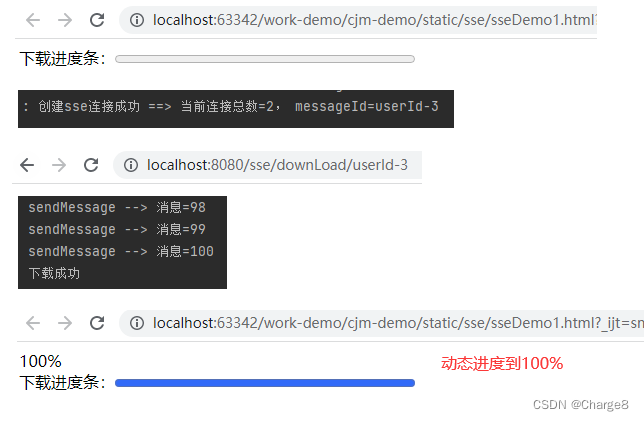

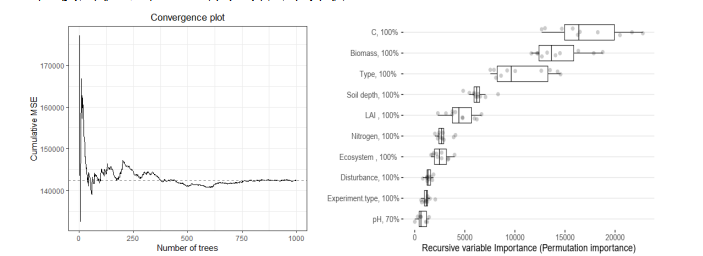


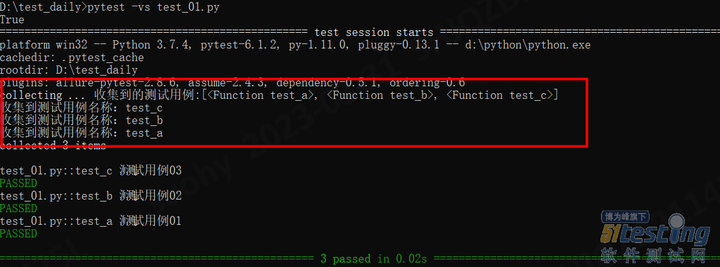

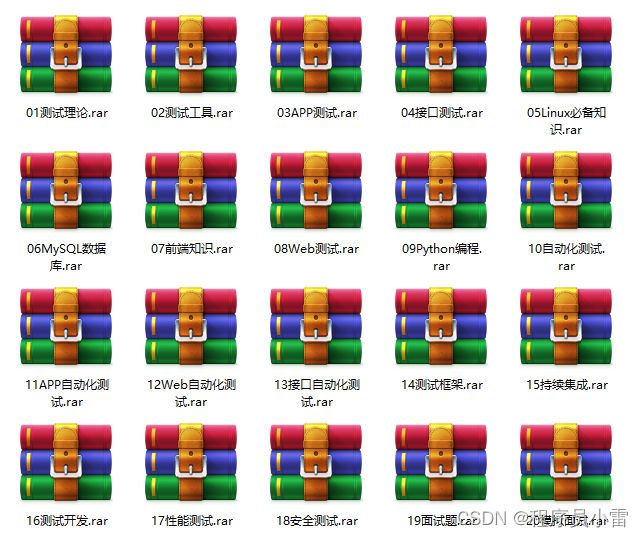
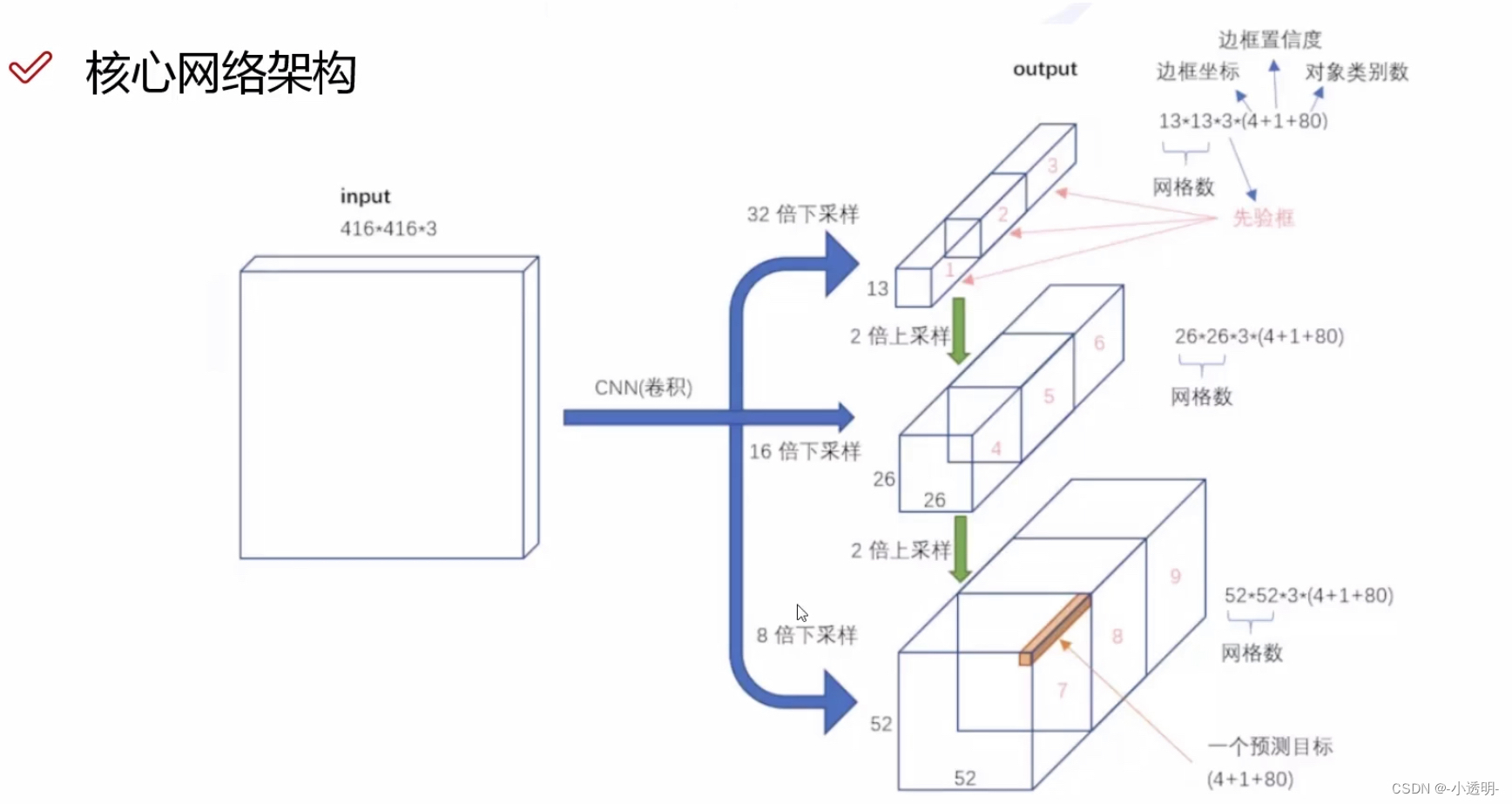

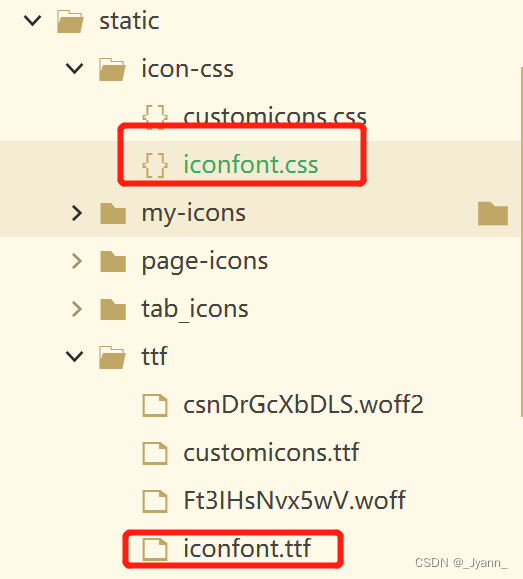
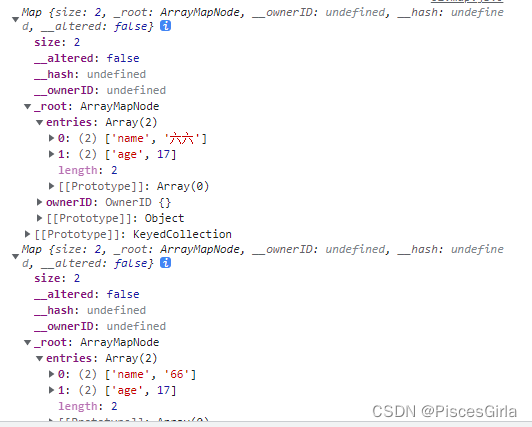
![[C++][opencv]opencv填充透明色到不规则polygon区域](https://img-blog.csdnimg.cn/579fe75cf947424eb8e4fc124a183967.jpeg)

